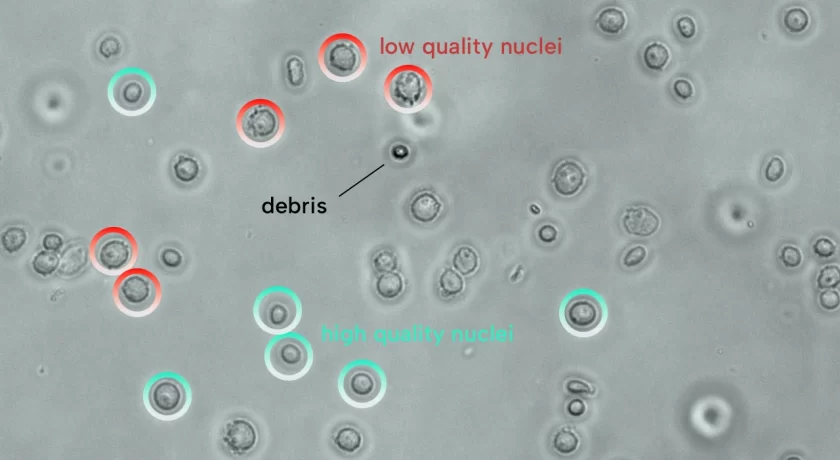
In this blog, we will discuss how two transcription factors influence the maturation of natural killer (NK) cells.
NK cells are cells of the innate immune system and are part of the group 1 innate lymphoid cells (ILCs). NK cells are important for antiviral and antitumor responses. Before NK cells are fully functionally active, they need to undergo maturation.
The development of NK cells from precursors starts in the bone marrow. Maturation also starts in the bone marrow and continues in the periphery. The maturation of NK cells consists of three stages, which are discriminated by the surface expression of several receptors.
Each maturation stage is defined by the expression of certain genes, which is controlled by a network of transcription factors (TFs). TFs bind to the specific regions in the DNA and induce or repress the transcription of specific genes. Several TFs are important for the maturation of NK cells, of which two are T-BET and EOMES. However, the exact role of these two TFs in NK cell development and maturation remained to be clarified.
This study uses bulk and single-cell RNA sequencing to uncover the cellular and molecular roles of EOMES and T-BET in NK cell maturation. This research was published in Nature Communications in September 2021.
Sequential roles of EOMES and T-BET in NK cell maturation
Using bulk RNA sequencing*, this study shows that the TF’s EOMES and T-BET have complementary roles in maturing NK cells.
EOMES is dominantly expressed in immature NK cells. In these cells, EOMES is required to specify the NK cell lineage. This means that it induces specific genes, such as receptors and genes important for cytotoxic effector functions, that are specific for NK cells.
In contrast, T-BET is dominant in mature NK cells, in which it supports terminal NK cell maturation, making the NK cell fully mature. Terminal maturation is promoted by inducing responsiveness to specific cytokines and by repressing cell proliferation and expression of progenitor genes.
The two TFs strongly overlap in their DNA binding regions. Furthermore, there are extensive epigenetic changes at the binding sites of EOMES and T-BET during NK cell maturation. Epigenetic changes have an impact on the activity and expression of genes without changing the DNA code.
Single-cell RNA sequencing: EOMES-deficient cells are not ILC1 cells
To examine the effect of EOMES on the maturation of NK cells, EOMES-deficient NK cells were used. However, it was suggested that EOMES-deficient NK cells were closely related to ILC1 cells, which are a different type of ILCs. In this study, NK cells from EOMES-deficient mice were suggested to be closely related to ILC1 cells, which are a different type of ILCs. To exclude that EOMES-deficient cells were similar to ILC1 cells, single-cell sequencing analysis was performed of immature NK cells and ILC1 cells from control and EOMES-deficient mice, which have EOMES-deficient cells.
The single-cell RNA sequencing platform SORT-seq was used and performed at Single Cell Discoveries. By clustering the cells based on gene expression, this analysis showed that immature EOMES-deficient cells do not convert into ILC1 cells, strengthening the conclusion that EOMES is necessary for NK cell maturation.
These data increase the fundamental knowledge of NK cell development and maturation. Furthermore, increased knowledge on NK cell maturation could contribute to our understanding of diseases associated with defective NK cell maturation, such as chronic viral infections or cancer progression. However, further research is required before this can be exploited for disease treatment.
*Please note that the bulk RNA sequencing data in this study was not generated by Single Cell Discoveries
Click on the link below to read the full article:


